Affiliate links on Android Authority may earn us a commission. Learn more.
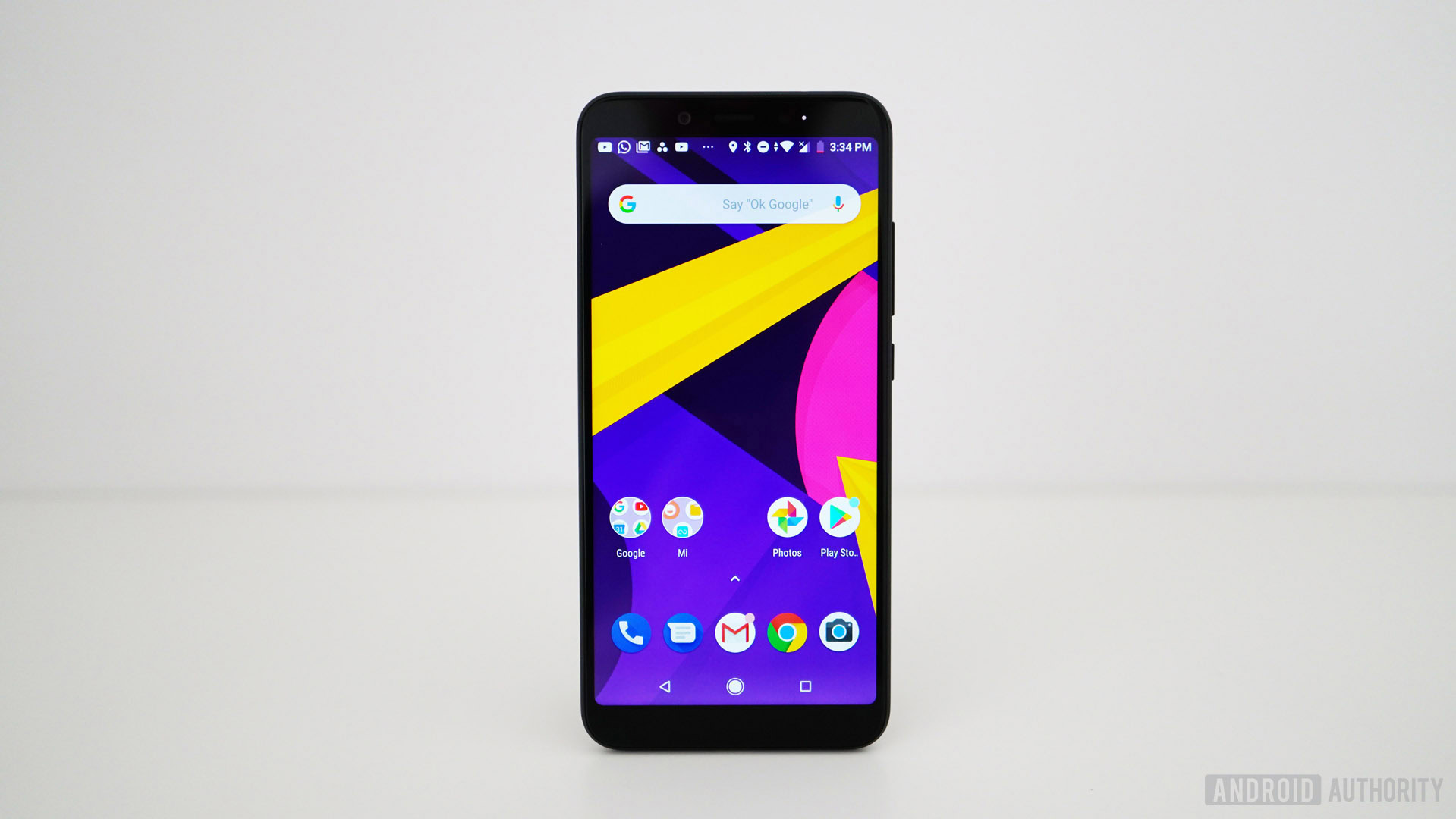
Xiaomi Mi A2
What we like
What we don't like
Our scores
Xiaomi Mi A2
As expensive smartphones become less and less surprising, cheaper smartphones are picking up the slack. More and more low-priced phones have been coming out featuring performance and camera quality unheard of even a few years ago. Last year’s Xiaomi Mi A1 was good example of this. This year, its Android One successor, the Mi A2, goes even further. Read on for our Xiaomi Mi A2 review.
One of the biggest issues facing Chinese smartphones going global is the software disconnect. What many Asian audiences value — or even demand — does not always translate so well to Western tastes. Everyone from Huawei to Vivo has grappled with this. Most companies are not keen on ditching their trademark software skin for a global audience.
Google’s Android One program allows device manufacturers to focus on the hardware while leaving the software — updates, apps and security patches — to Google. There’s still room for a custom camera app or some specific software additions, but most of what you see on an Android One phone comes straight from Google. Android One also eliminates one of the other big issues with Chinese phones: the lack of ongoing support.
It’s a pretty compelling argument — hardware by Xiaomi and software by Google. I’m a fan of what Android One promises, but the hardware still needs to be able to back it up. Thankfully, the Xiaomi Mi A2 is one of the best Android One phones I’ve yet had the pleasure of using – but it won’t appeal to everyone.
The Xiaomi Mi A2 is one of the best Android One phones I've seen – but it won't appeal to everyone.
The Mi A2 comes with a few shortcomings that are increasingly deal breakers when added together. There’s no microSD, no NFC, modest battery capacity, no IP rating, no headphone jack, and no wireless charging. Not all of these omissions are attributable to the Mi A2’s 250 euro (~$289) starting price either. The Mi A1 had a headphone jack, a microSD card, and a (slightly) larger battery. Let’s take a closer look.
Display

Screen quality often lets down cheaper phones, but the Mi A2 does admirably — if not exceptionally. The Mi A2’s display, like the Mi 6X upon which it is based, is a 5.99-inch Full HD+ IPS LCD. It’s a half-inch bigger than its predecessor, with a new 18:9 aspect ratio, but the overall footprint of the Mi A2 is pretty much identical to the Mi A1. It has a 1,080 x 2,160 resolution with a pixel density of 403 ppi — not bad given its size — ensuring crisp detail.
Despite being an LCD, the panel offers decent contrast and bright, but not over-saturated colors. If you like Samsung displays you might find it a little undercooked. If you prefer a more neutral palette you’ll likely not mind (I didn’t). Unfortunately, if you’ve grown accustomed to the display customization possible in MIUI, you won’t find any of that here.
The Mi A2 has pretty decent viewing angles and good touch response, but its brightness leaves a little to be desired. The Mi A2 is still legible outdoors in anything but the most intense midday sun, but you’ll likely need to bump up your brightness. In fact, you’ll probably find yourself always keeping the Mi A2 screen at a higher brightness percentage than usual.
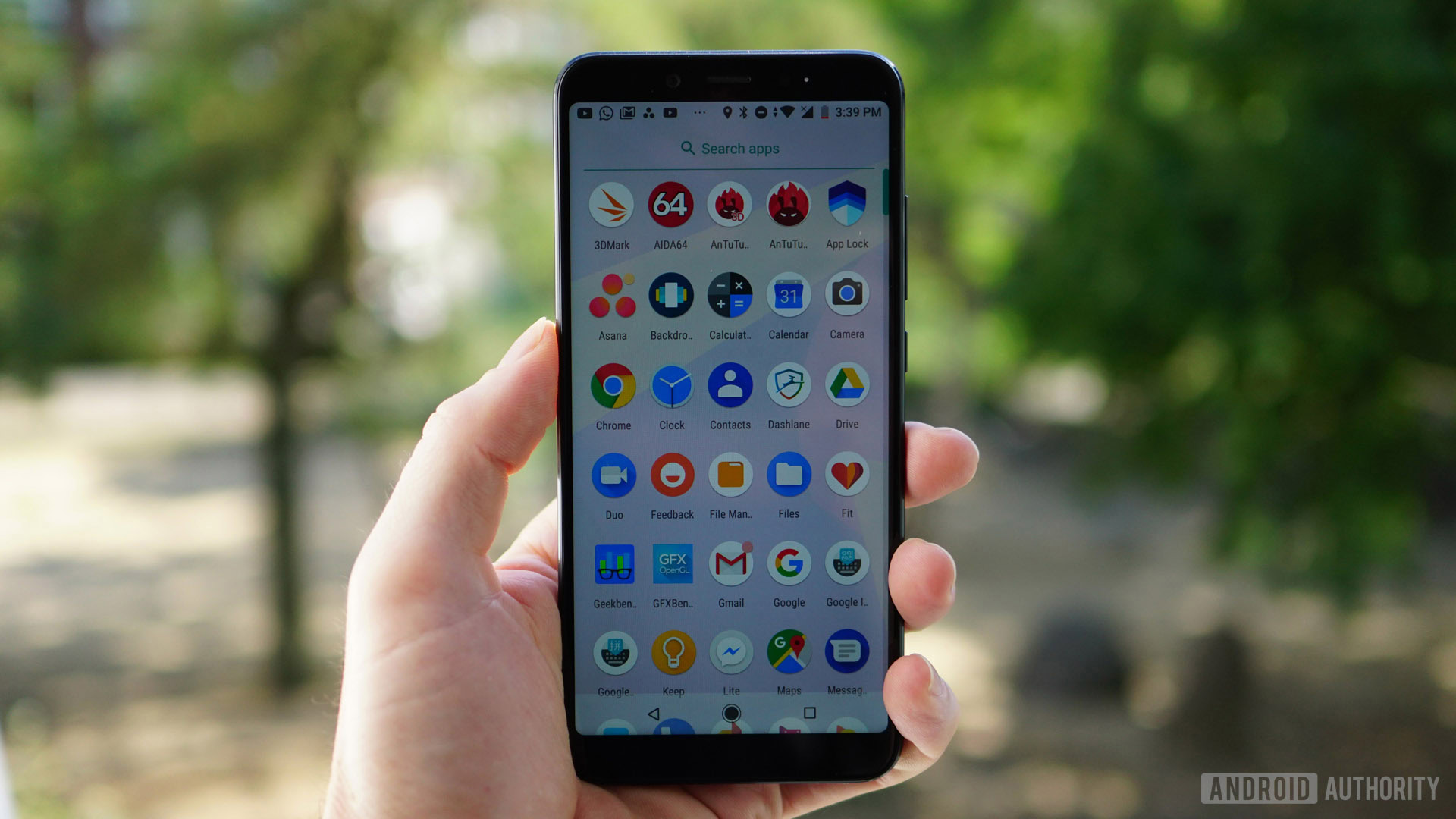
The screen is coated with Gorilla Glass 5 for better scratch resistance and shock absorption, and there’s an oleophobic coating to help manage your finger grease. A simple silicon case is included in the box, which was a nice surprise in this price segment (Google doesn’t even give you a free case with a Pixel 2!). There’s an ambient display option in the settings, but it only appears when a new notification comes, to stop the LCD panel from draining battery.
The Mi A2 screen has slightly rounded corners like those we’ve seen from LG, Samsung, and others, and there is no notch (although there is on the chunky Mi A2 Lite). Navigation is done with onscreen software buttons — another shift for long-time Xiaomi fans — and the back button is now on the left (Xiaomi’s previous button layout had it on the right). There’s no built-in method to switch them around, but you can get an app from Google Play to do it if you’re having trouble adjusting.
All told, the Mi A2 display is capable, if not exceptional. It’s certainly not the best display on the market, but it’s still pretty good for this price point. Fans of heavily saturated OLED panels or super bright displays might not be happy. It will do quite nicely for everyone else.
Design
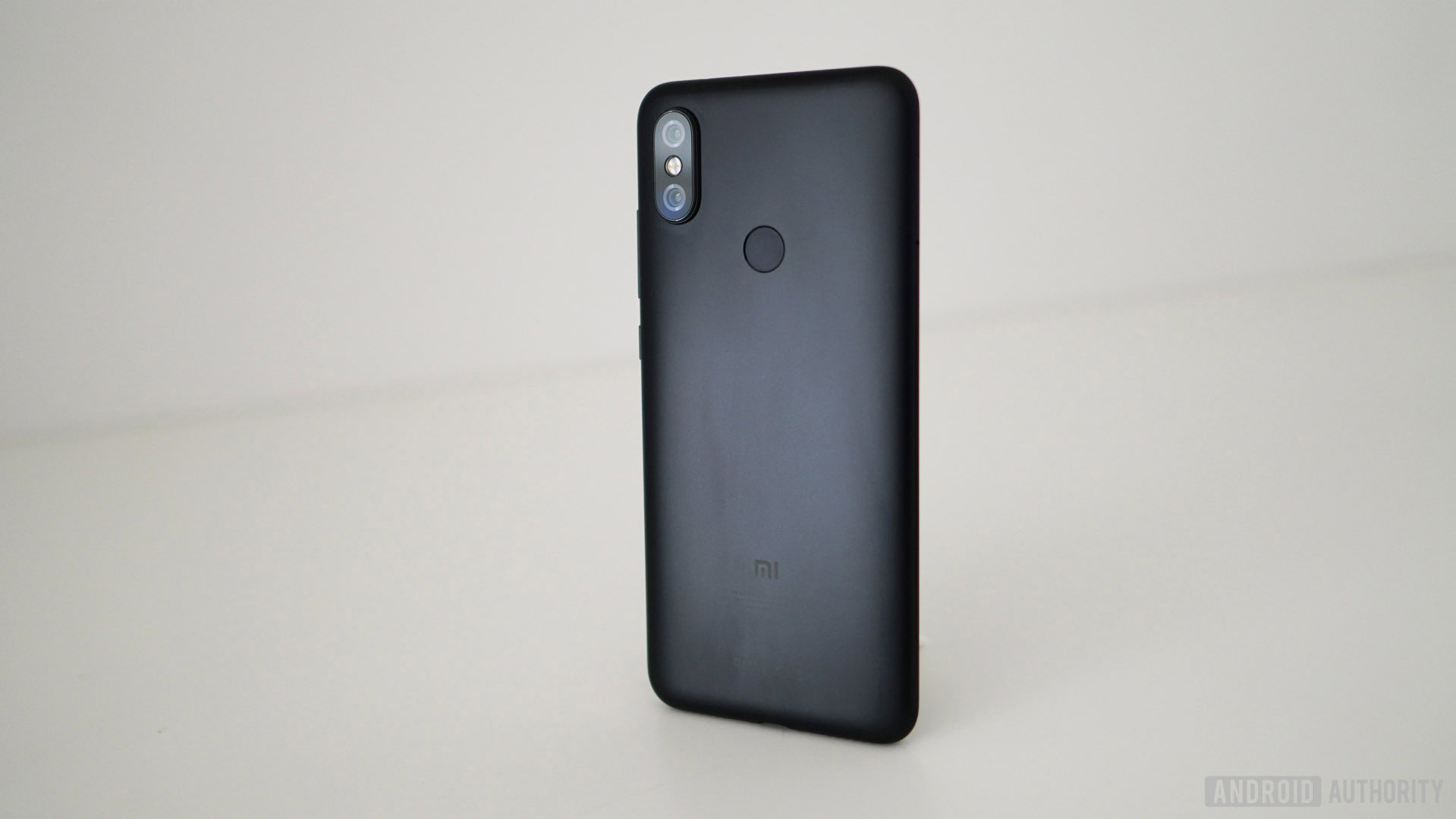
Affordable phone design typically means you shouldn’t expect a premium look, but this isn’t the case with the Xiaomi Mi A2. The build quality of the Xiaomi Mi A2 is excellent, building on the classic styling of the Mi A1. The discrete antenna bands, brushed aluminum, and smooth lines of my black unit give it a pebble-like look. Just don’t go dropping it in any rivers though — there’s no IP rating.
The build quality of the Xiaomi Mi A2 is typically excellent, building on the classic styling of the Mi A1.
The all-aluminum back is grippier than most glass-backed phones. It handles general wear and tear better too. The design is about as unassuming as most other phones these days, with fairly small bezels surrounding the display and a familiar iPhone X-like layout on the back for the vertically stacked dual cameras. The rear-mounted fingerprint scanner is good and reliable, though not as fast as higher-end sensors. In many ways the hardware just gets out of the way here, providing a clean foundation for the software. The Mi A2’s design won’t necessarily inspire you, but it’s equally unlikely to make you cringe.
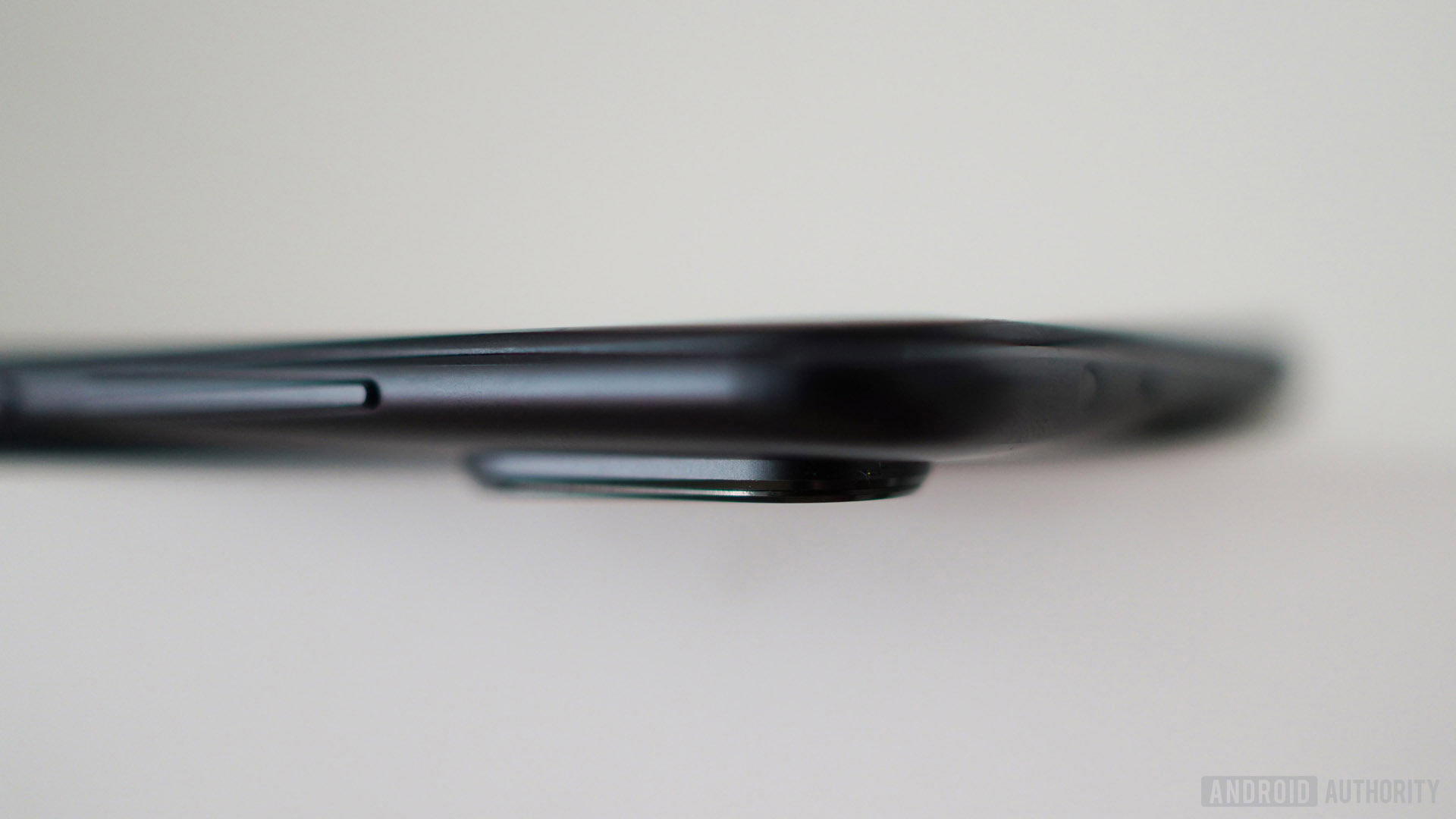
One thing that does need to be mentioned is the huge camera bump on the back. While most of us have grown used to the hump’s presence, the Mi A2’s is very prominent. Like the Mi A1, the A2 is 7.3mm thin, which is all well and good, but I can’t help wishing Xiaomi squeezed in a little more battery and flattened out a bit of the camera bump. Because the camera array is off center the phone rocks if you’re typing while it’s laying flat on a table.
There’s no wireless charging in the Mi A2 thanks to the metal back, but it includes USB Type-C. The lack of a headphone jack is slightly mitigated the 3.5mm to USB Type-C adapter in the box, which is another nice surprise. An IR blaster up top provides you with the necessary hardware for controlling your TV with your phone, but you’ll have to install the Mi Remote app on your own (I believe it is pre-installed on the Mi A2 in India).
Specs
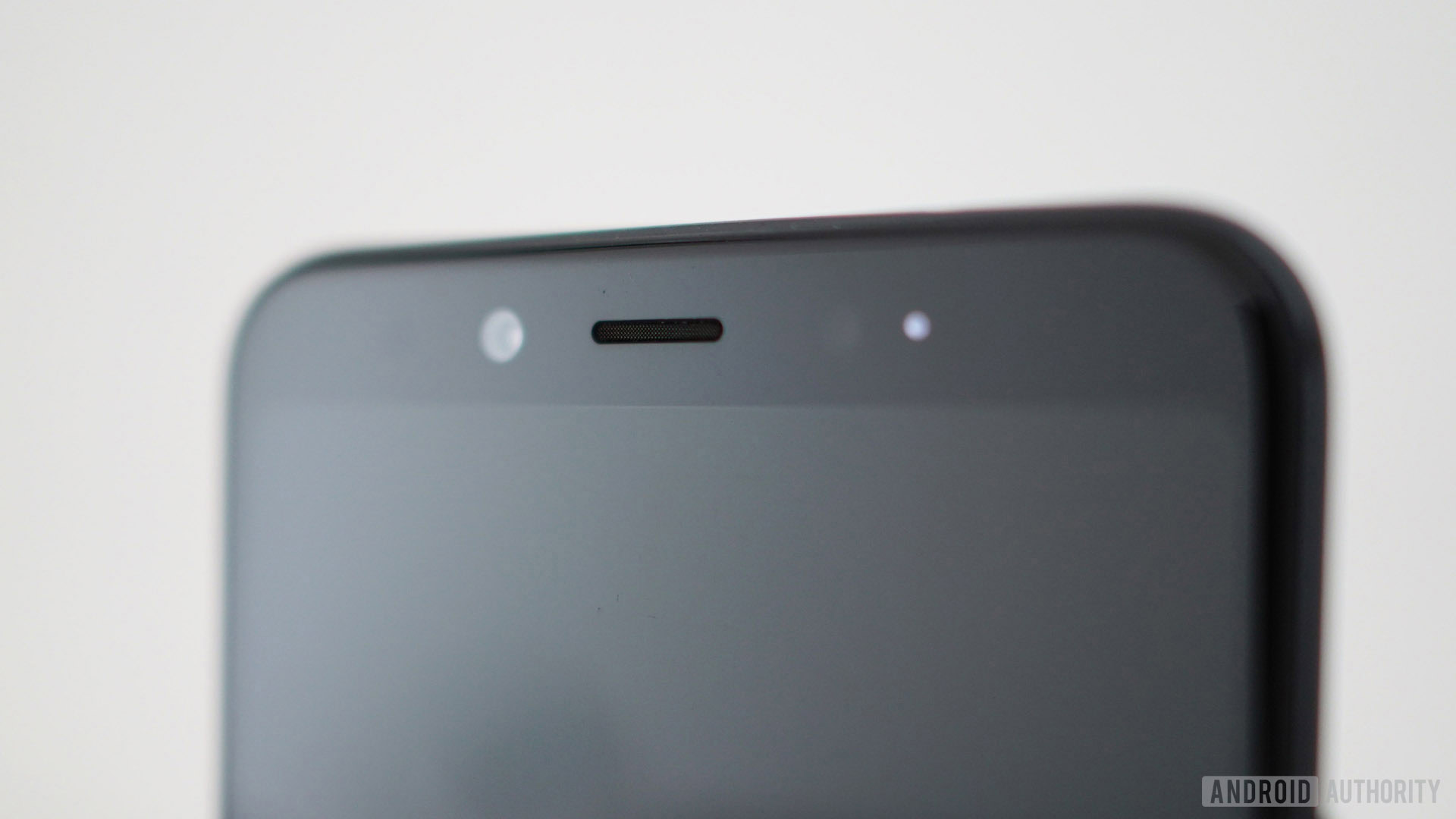
The Xiaomi Mi A2 doesn’t aspire to be a specs-lover’s dream, but you no longer need to reach the rarified heights of ultra-premium flagships for a fast and stable Android experience. Regardless, the Mi A2 still steps things up a notch.
The Xiaomi Mi A2 doesn't aspire to be a specs lovers dream, but it still steps thing up a notch.
The Mi A2 includes the new Snapdragon 660 mobile platform (up from the 625 in most other comparable Xiaomi phones). The 14nm 660 comprises four high-performance Kryo 260 cores clocked at 2.2GHz and four low-energy Kryo 260 cores at 1.8GHz. The GPU is the Adreno 512. This processing bump is noticeable throughout the Mi A2. It’s especially a bonus at this price point — the nearest competition to the Mi A2’s specs sheet is the more expensive Nokia 7 Plus.
There are a few RAM and memory configurations: 4GB of RAM with 32GB or 64GB of storage, and 6GB of RAM with 128GB of storage. I used the 4GB/64GB version for this Xiaomi Mi A2 review. At the time of this review, the only version available in India is the 4GB/64GB version, with the 6GB/128GB version coming later. There is no microSD expansion on the Mi A2, which makes the 32GB version hard to recommend — dropping an extra 30 euros for the 4GB/64GB version is a wiser choice.
| Xiaomi Mi A2 | Xiaomi Mi A2 Lite | |
|---|---|---|
Display | Xiaomi Mi A2 5.99-inch IPS LCD 2,160 x 1,080 resolution 403ppi, 85% NTSC 18:9 aspect ratio | Xiaomi Mi A2 Lite 5.84-inch IPS LCD 2,280 x 1,080 resolution 432ppi, 84% NTSC 19:9 aspect ratio with notch |
SoC | Xiaomi Mi A2 Snapdragon 660 (2.2GHz octa-core) | Xiaomi Mi A2 Lite Snapdragon 625 (2.0GHz octa-core) |
GPU | Xiaomi Mi A2 Adreno 512 | Xiaomi Mi A2 Lite Adreno 506 |
RAM | Xiaomi Mi A2 4/6GB | Xiaomi Mi A2 Lite 3/4GB |
Storage | Xiaomi Mi A2 32/64/128GB | Xiaomi Mi A2 Lite 32/64GB |
MicroSD | Xiaomi Mi A2 No | Xiaomi Mi A2 Lite Yes |
Camera | Xiaomi Mi A2 Rear: Dual-camera (12MP, f/1.75, 1.25μm Sony IMX486 + 20MP, f/1.75, 2μm Super Pixel Sony IMX376) Front: 20MP, f/2.2, 2μm Super Pixel Sony IMX376 Front HDR and 4500K selfie-light | Xiaomi Mi A2 Lite Rear: Dual-camera (12MP, f/2.2, 1.25μm + 5MP f/2.2, 1.12μm) Front: 5MP, f/2.0, 1.12μm |
Battery | Xiaomi Mi A2 3,000mAh 5V/2A charging USB Type-C USB 2.0 | Xiaomi Mi A2 Lite 4,000mAh 5V/2A charging Micro-USB USB 2.0 |
Fingerprint scanner | Xiaomi Mi A2 Yes | Xiaomi Mi A2 Lite Yes |
Headphone port | Xiaomi Mi A2 No | Xiaomi Mi A2 Lite Yes |
Software | Xiaomi Mi A2 Android 8.1 Oreo (Android One) | Xiaomi Mi A2 Lite Android 8.1 Oreo (Android One) |
Connectivity | Xiaomi Mi A2 Dual Nano-SIM Bluetooth 5.0 GSM: B2/3/5/8 WCDMA: B1/2/4/5/8 TDD-LTE: B38/40 FDD-LTE: B1/B2/B3/B4/B5/B7/B8/B20 | Xiaomi Mi A2 Lite GSM: B2/B3/B5/B8 WCDMA: B1/B2/B5/B8 TD-LTE: B38/B40 FDD-LTE: B1/B2/B3/B4/B5/B7/B8/B20 |
Dimensions | Xiaomi Mi A2 158.7 x 75.4 x 7.3mm | Xiaomi Mi A2 Lite 149.3 x 71.7 x 8.75mm |
Weight | Xiaomi Mi A2 166g | Xiaomi Mi A2 Lite 178g |
Colors | Xiaomi Mi A2 black, gold, blue, red, rose gold | Xiaomi Mi A2 Lite black, gold, blue |
Audio
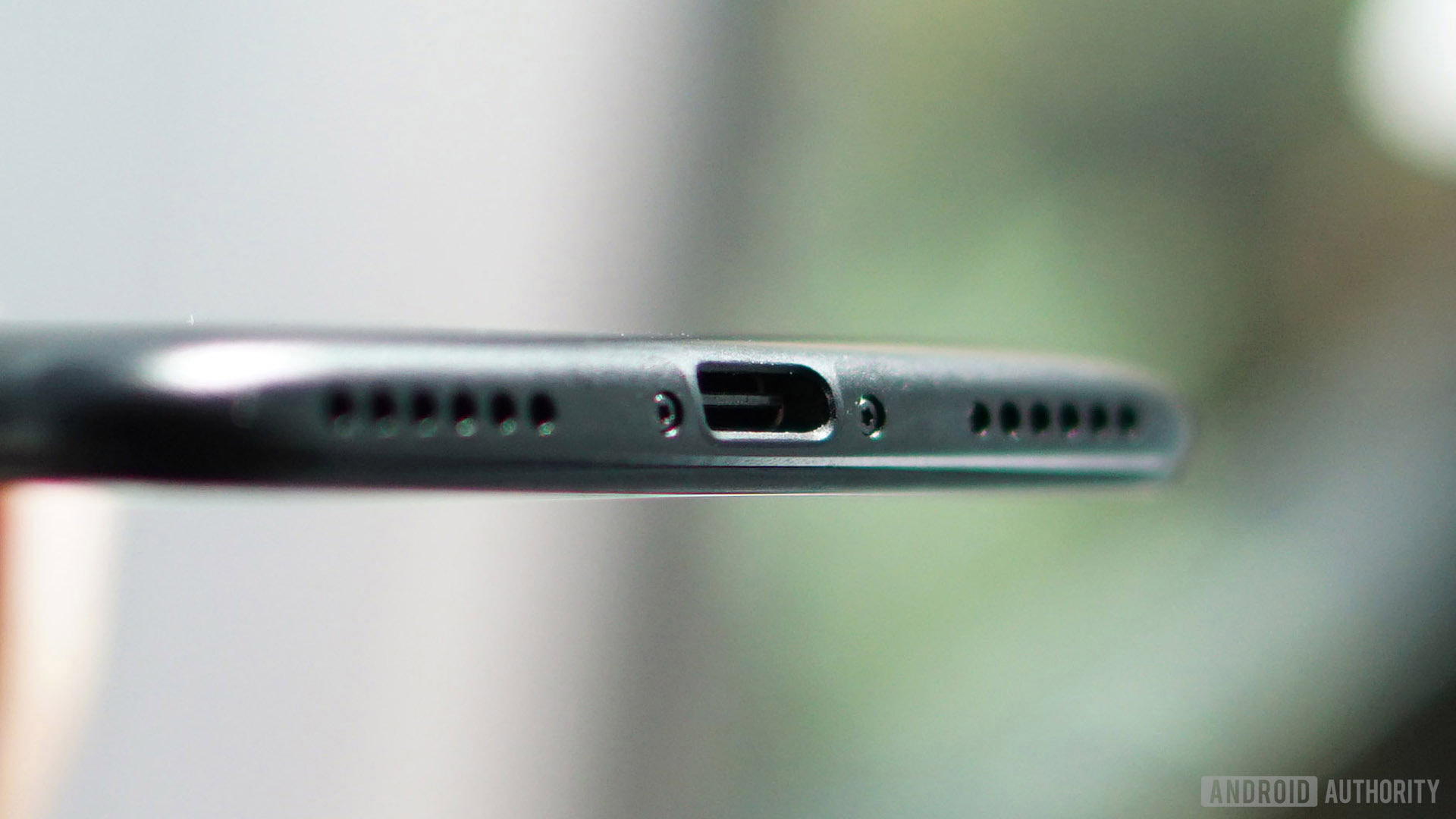
Despite the included headphone adapter, there are no bundled earbuds here. If you were planning on using your existing headphones with the Mi A2, this probably won’t matter. If you were hoping for some included earbuds, factor buying a separate pair into the overall purchase price.
The speaker grills on the bottom of the Mi A2 conceal a speaker on the right and a mic on the left. The Mi A2 certainly gets loud enough, but don’t expect too much from this mono speaker at full volume, especially if you like bass. It’s also quite easy to conceal the single speaker while gaming, so a pair of wired or wireless headphones are a better idea if audio matters to you. Oreo means you’ve got support for various Bluetooth codecs including SBC, AAC, aptX, aptX HD, and LDAC if you wanted to go wireless and the Mi A2 supports Bluetooth 5.
In-call audio was reliable and clear and the earpiece speaker got loud enough even when outdoors. I didn’t have any problems with cellular or Wi-Fi connectivity and wireless connections were stable, barring the usual Bluetooth issues you should expect on any phone. Audio is definitely not the Mi A2’s strong suit, but it’s not abominable either.
Battery
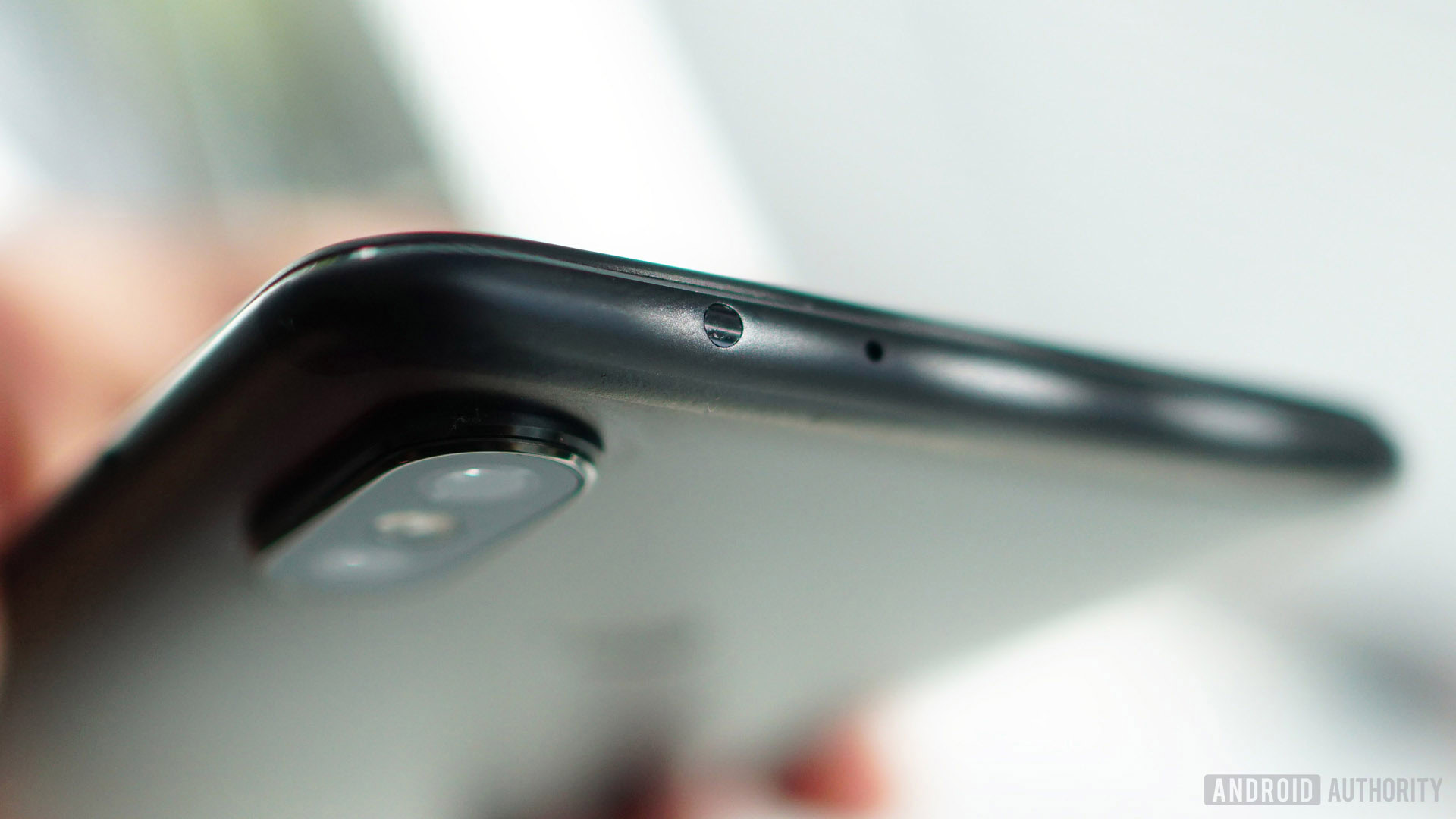
The Xiaomi Mi A2 has a svelte 3,000mAh battery in order to fit into that ultra-slim chassis. While battery life wasn’t bad, the thought of the larger battery Xiaomi could’ve put in a slightly thicker device persisted. Had Xiaomi opted for a 3,500mAh battery that concern would have been quashed and we’d still have a super-thin phone. Of course, this would have stepped on the toes of the Mi A2 Lite’s 4,000mAh cell (and non-existent camera bump).
The combination of stock Android with no bloatware and the economical Snapdragon 660 means you’ll still get a decent day’s usage out of the Mi A2. At my standard screen brightness (around 50 percent) I consistently managed over five hours of screen-on time. Battery life was perfectly acceptable, but not groundbreaking. The LCD display and more power-hungry chipset are the most likely culprits here.
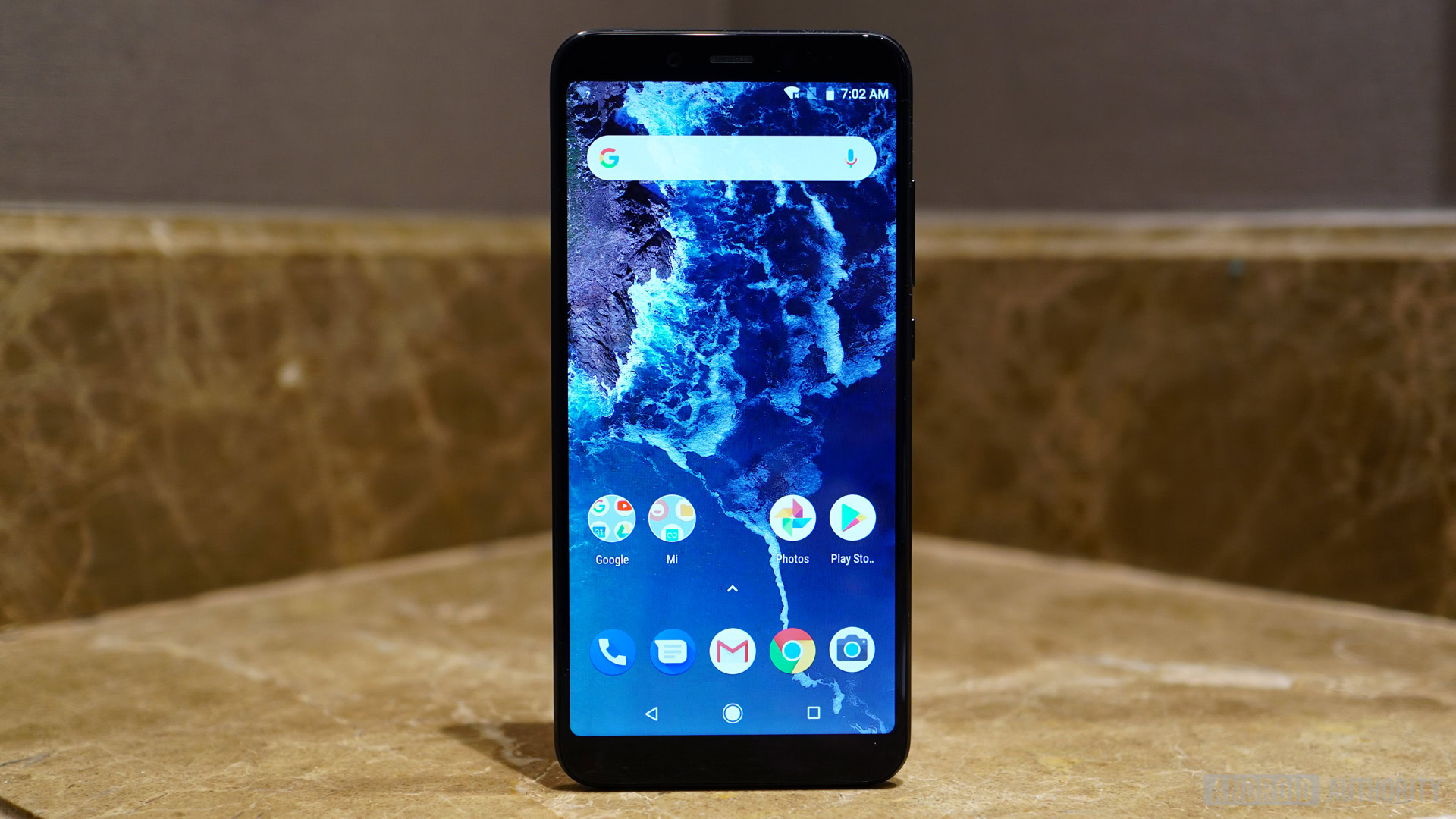
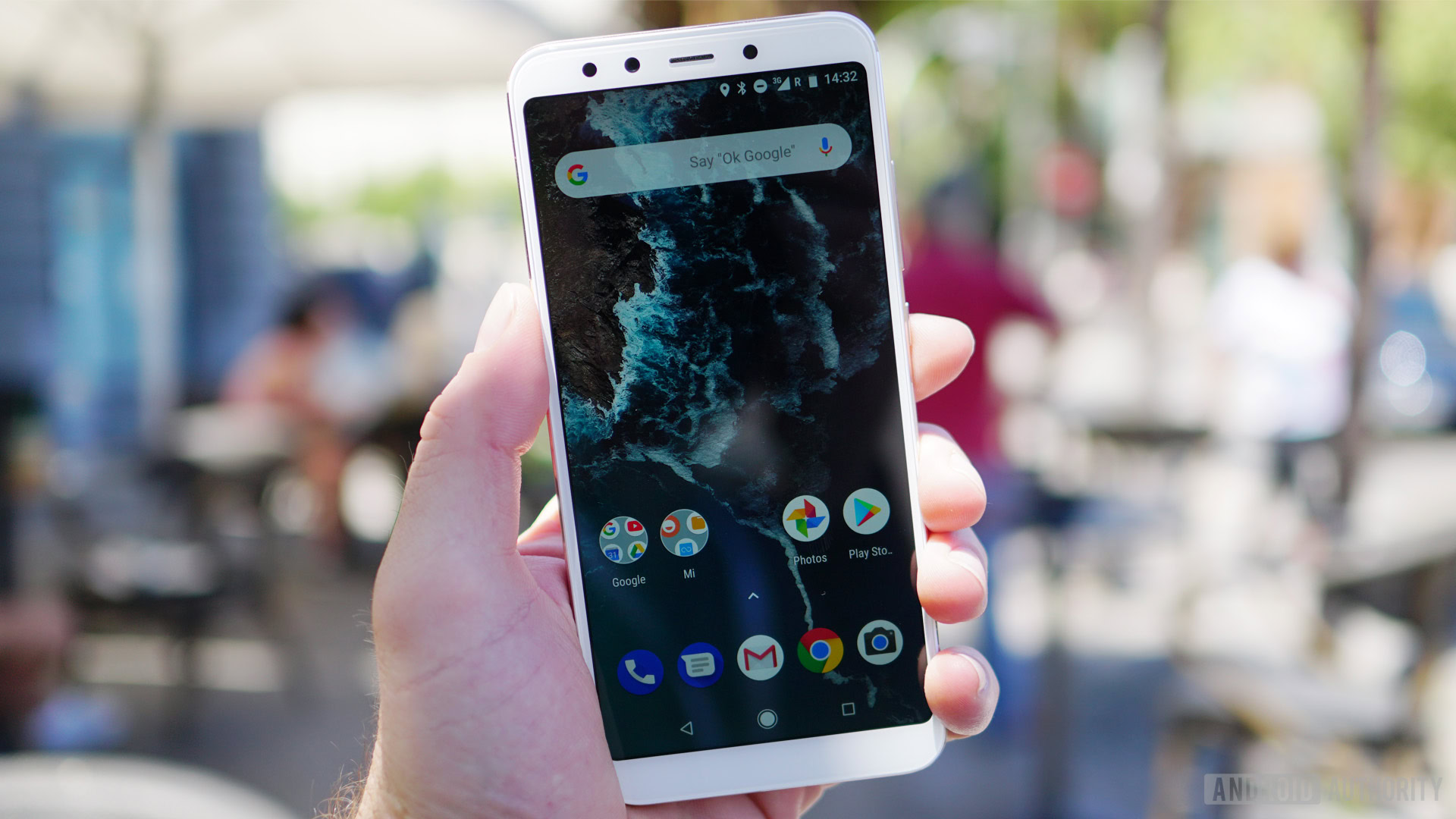
The global Mi A2 unit (which I have) supports 5V/2A charging via Qualcomm’s Quick Charge 2.0. The version available in India will support Quick Charge 4.0, although you won’t get a QC4 charger in the box; it’ll be 10W no matter where you are.
There’s only the standard battery-saving mode in Android Oreo, but Android Pie will bring Adaptive Battery and Adaptive Display to help eke out a little more from the Mi A2’s diminutive battery. Fast charging the 3,000mAh battery takes an hour and a half.
Performance
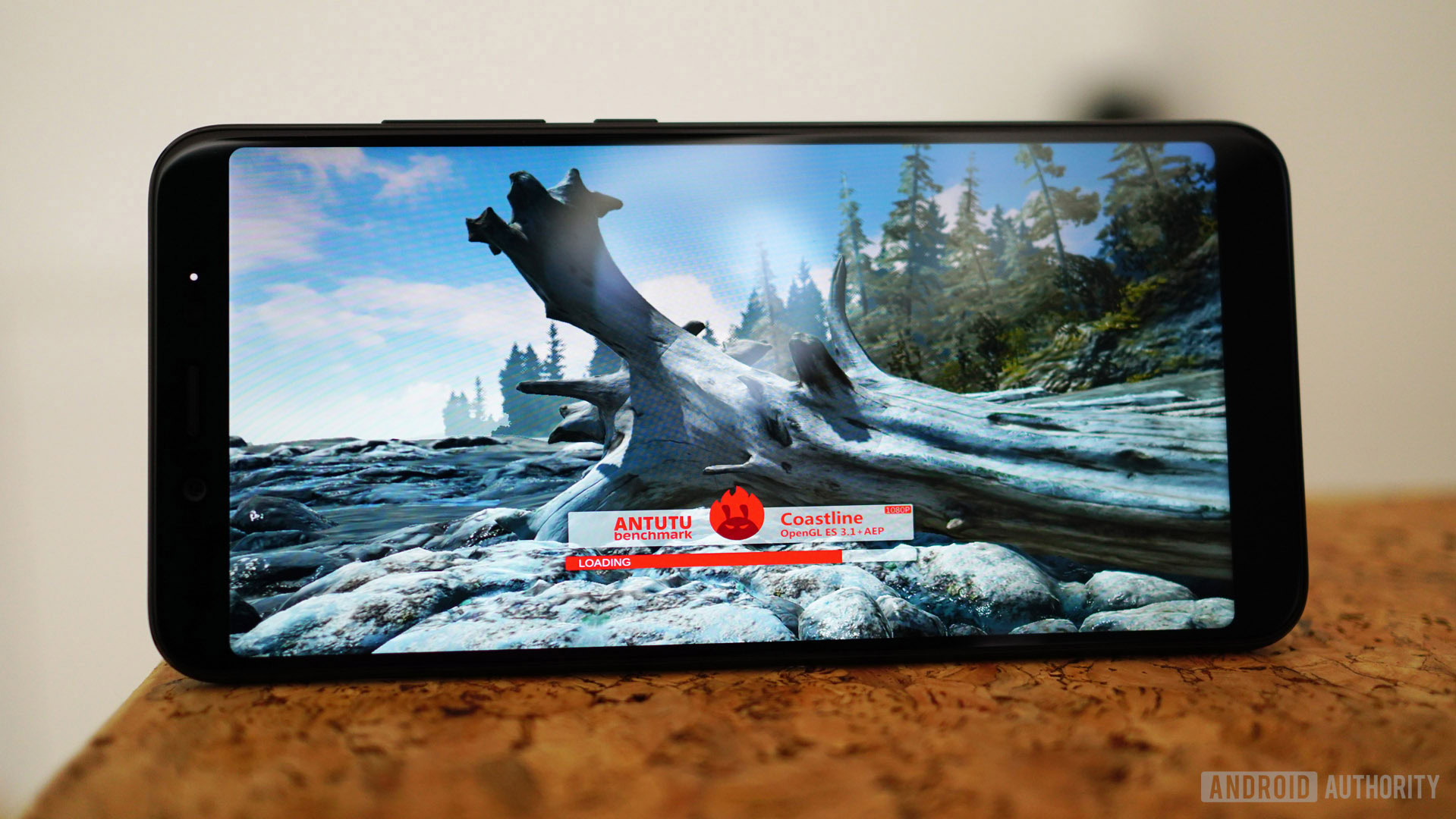
The upgrade to the Snapdragon 660 from perennial Xiaomi favorite the Snapdragon 625 is a big deal for performance. The 625 uses energy-efficient Cortex A53 cores while the 660 swaps them out for the more powerful Kryo 260 architecture. The new X12 modem also doubles your download speeds.
4GB of RAM is perfectly sufficient for a phone running stock Android so you probably won’t notice any issues with general handling. Naturally, the Xiaomi Mi A2 won’t feel as responsive as a phone twice or three times the price, but it’s still a very impressive experience.
The Xiaomi Mi A2 won't feel as responsive as a phone that costs double or triple as much, but for the price, it's a very impressive experience.
I never noticed the phone getting hot under stress, likely because metal dissipates heat so well. The only time it got noticeably hot was during the GFXBench test, but it cooled down rapidly and wasn’t as hot as some other phones in the same test. Gaming sessions typically went off without a hitch and I didn’t encounter any dropped frames or stutters (I’m not the most aggressive gamer though, so your mileage may vary).
If you’re familiar with the performance on the original Mi A1, you should expect a big difference with the Mi A2. Here are some benchmark results if that’s your thing.
Software
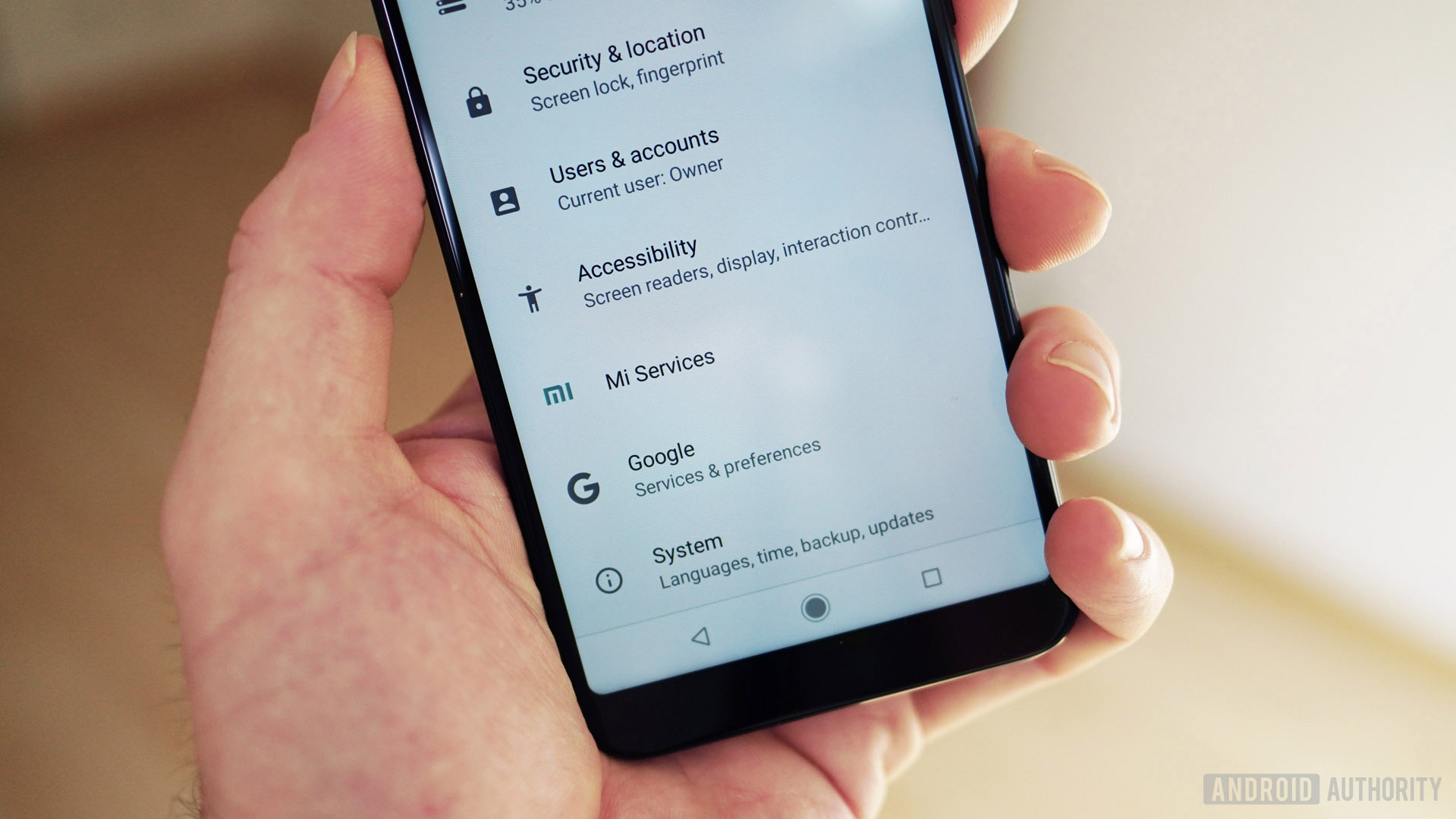
On any Android One device, there’s not much to see on the software front, which is half the point. If you love all the extra features and software options of a manufacturer skin, Android One is not for you. Those added extras notoriously slow down updates and the system itself. If you’re willing to give up the extras to just get core Android, you’ll also get updates much faster.
There’s still room for a little flavor though. Xiaomi’s Mi A2 bypasses Google’s bare-bones camera app for its own (which we’ll cover below). This means it can better support the dual cameras and it also features Google Lens integration. There’s also a Mi Service section in the settings, although it only contains a toggle to opt-in to Xiaomi’s user experience program and allow collecting diagnostic data.
Out of the box there is only a single screen of apps and 95 percent of them are Google’s default suite, including Google Assistant. The Xiaomi Mi A2 is blessedly free of redundant duplicate apps and only bundles three from Xiaomi: Feedback, a more fully featured file manager, and Mi Drop. You can delete the latter two if you don’t want them.
Because Google handles updates here, you shouldn’t have to wait too long for the Android 9 Pie update. Google’s default (vague) position is “later this fall.” Xiaomi told me it will come “at the earliest possible time.” Given one of the main selling points of an Android One phone is faster updates, I can only hope the window between new OS version announcements and Android One updates across the board will shrink over time. Regardless, you won’t be waiting as long as you would on a Xiaomi phone with MIUI.
Camera
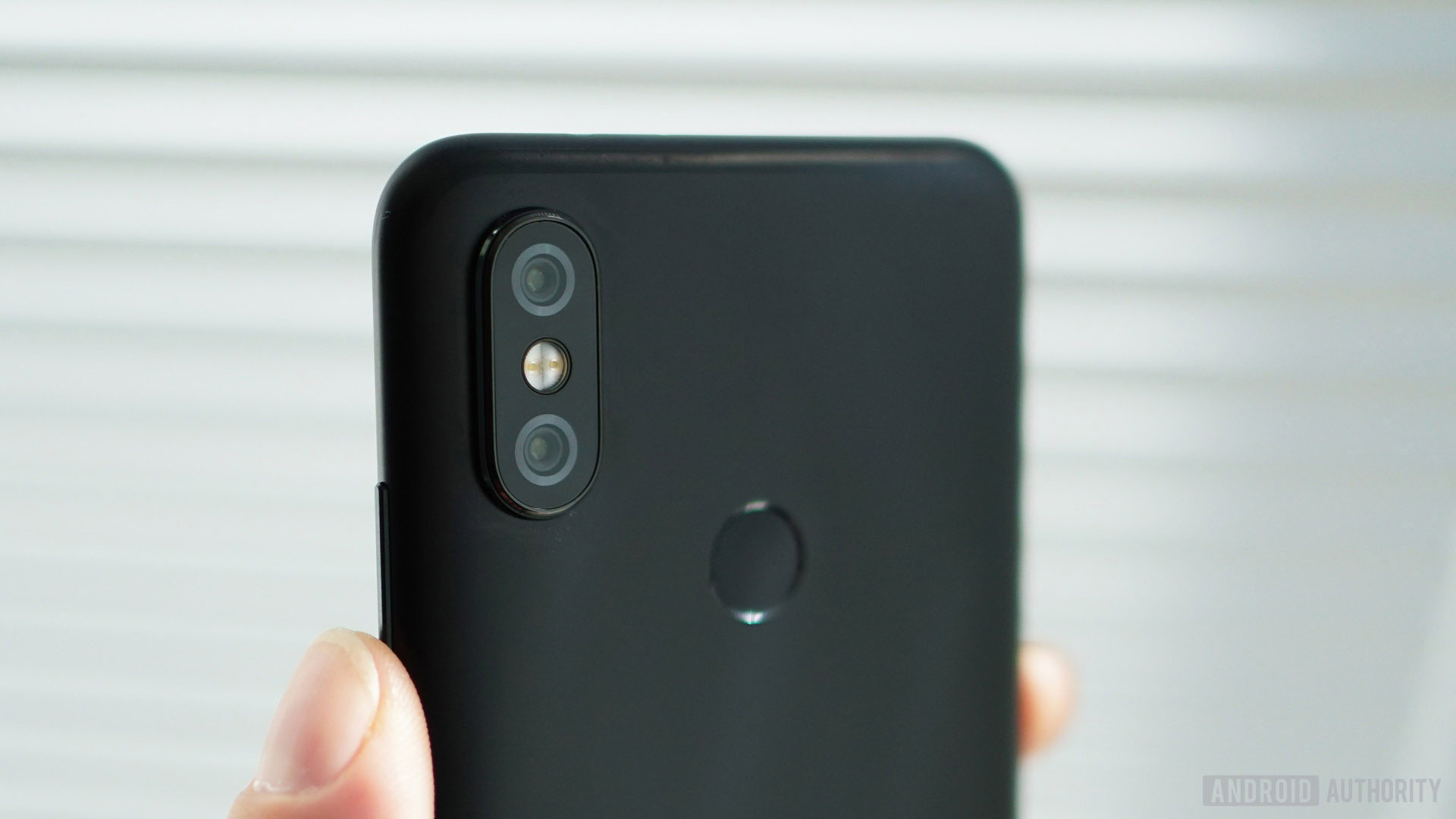
As with most phones these days, the camera is the real attraction here. With the Mi A2, I was blown away again and again by just how good a camera on a 250 euro phone could be. It reveals its price point in a few areas, but the Mi A2 is a testament to what good camera software can do. Oddly, its low-light camera was, for me, the weakest part of the camera experience.
With the Mi A2, I was blown away again and again by just how good the phone on a 250 euro phone could be.
The Mi A2 has a primary 12MP, f/1.75 lens and a secondary 20MP, f/1.75 lens. Unlike the Mi A1, there’s no longer a 2x optical zoom lens. Now the secondary lens is dedicated for low light shooting, though it also helps for portrait mode bokeh effects. The Mi A2 uses pixel binning to combine light data from four adjacent pixels on the 20MP sensor into two-micron Super Pixels, resulting in a 5MP image that’s upscaled back to 20MP resolution.
The front-facing camera uses the same 20MP sensor at f/2.0 aperture. It also offers front-facing HDR, a 4,500K selfie light and portrait mode. In the camera’s app portrait mode, the Mi A2 will automatically choose the best camera for the conditions. The rest of the time you’ll have to manually switch to the 20MP sensor by swiping over to Manual mode and tapping the button on the side. Despite what you might have read elsewhere, the Mi A2 only switches automatically in portrait mode, which is not all that great.
Weirdly, when you switch between the two rear-facing cameras, you can still leave all the settings in Manual mode on auto. A simple toggle in Auto mode would’ve given the 20MP sensor a better chance of use by regular folks. It seems reasonable to assume burying the lens-switching button in Manual mode means a very small percentage of Mi A2 owners will actually use it.
Mi A2 camera results range from spectacular to spectacularly confusing.
The Mi A2’s camera results range from spectacular to spectacularly confusing. In daylight shots, the Mi A2 has solid dynamic range and almost never blew out highlights. The Mi A2’s 12MP camera has very good color accuracy, with nice colors without over-saturating and good detail even in the shadows. Even in low light situations, it performs admirably, maintaining good color and contrast, and keeping noise to a minimum. I found portrait mode to be better than most, though I still wouldn’t recommend it. It’s blur edges are more convincing than the usual misjudged hard crop, but the overall result still looks quite fake.
When you switch to the 20MP sensor things get a little weird. Despite being billed as the “low-light camera,” there’s usually more noise in low-light shots from the 20MP sensor. While it occasionally picks up more detail, it tends to do very weird things to the image quality. Its weird cartoonish “enhancements” make the end result look nothing like reality. Just zoom into the buildings in the two riverside city shots or the foliage to the right of the streetlamp. It seems like an issue with image processing in manual mode, rather than the hardware.
Take a look at these photos of a horrendously dark park and the crop of the rock in the bottom-right corner. The first one is from the 12MP sensor in auto mode, the second is the 12MP sensor in manual mode, and the third is the 20MP shot. Again, the low-light sensor pulls more light, but it destroys the image quality in the process. Weirdly, the same degradation is visible on the 12MP sensor in manual mode. The 20MP sensor (or manual mode) also generally tended to dull colors, producing a warmer image with a yellow tint. This weird stuff is hopefully fixable with a software update. For now, I feel like burying the toggle for the 20MP sensor wasn’t such a bad thing.
If you only use the 12MP sensor on the Mi A2, you’ll likely be perfectly happy. We already know Google works closely with its Android One partners on areas like the camera before granting its endorsement. Google told us it recognizes the importance of the camera and worked very closely with Xiaomi to ensure it met its standards. Xiaomi didn’t tell me anything concrete about how much Google was in there.
If you only used the 12MP sensor on the Mi A2 you'd likely be perfectly happy with it.
The Mi A2 offers auto HDR on both the rear and front-facing cameras. There are AI beautification modes if you’re into that kinda thing, a front-facing flash for low-light selfies, a good panorama mode, filters, and a straighten option to correct your wonky horizons. For video, there’s support for 4K at 30fps, FHD at 60 and 30fs, and HD at 30fps. Video stabilization only works well at FHD and it’s best during daylight hours. While the stabilization is still there at night time, it’s much easier to spot, and thus less effective, thanks to the shuddering lights in the footage. There are also slow-motion and time-lapse videos.
The Mi A2 camera is a mixed bag. The 12MP sensor is great, but if you dig into its capabilities a little more you’re probably going to feel let down. It’s always a shame when a company adds a secondary camera and then fails to do any significant with it. I’m hoping the Mi A2’s secondary camera issues can be fixed with an update, but for now, it’s not a camera you should really bother with: just stick to the 12MP shooter. Here are some more hpoto samples:
Gallery
Pricing and final thoughts
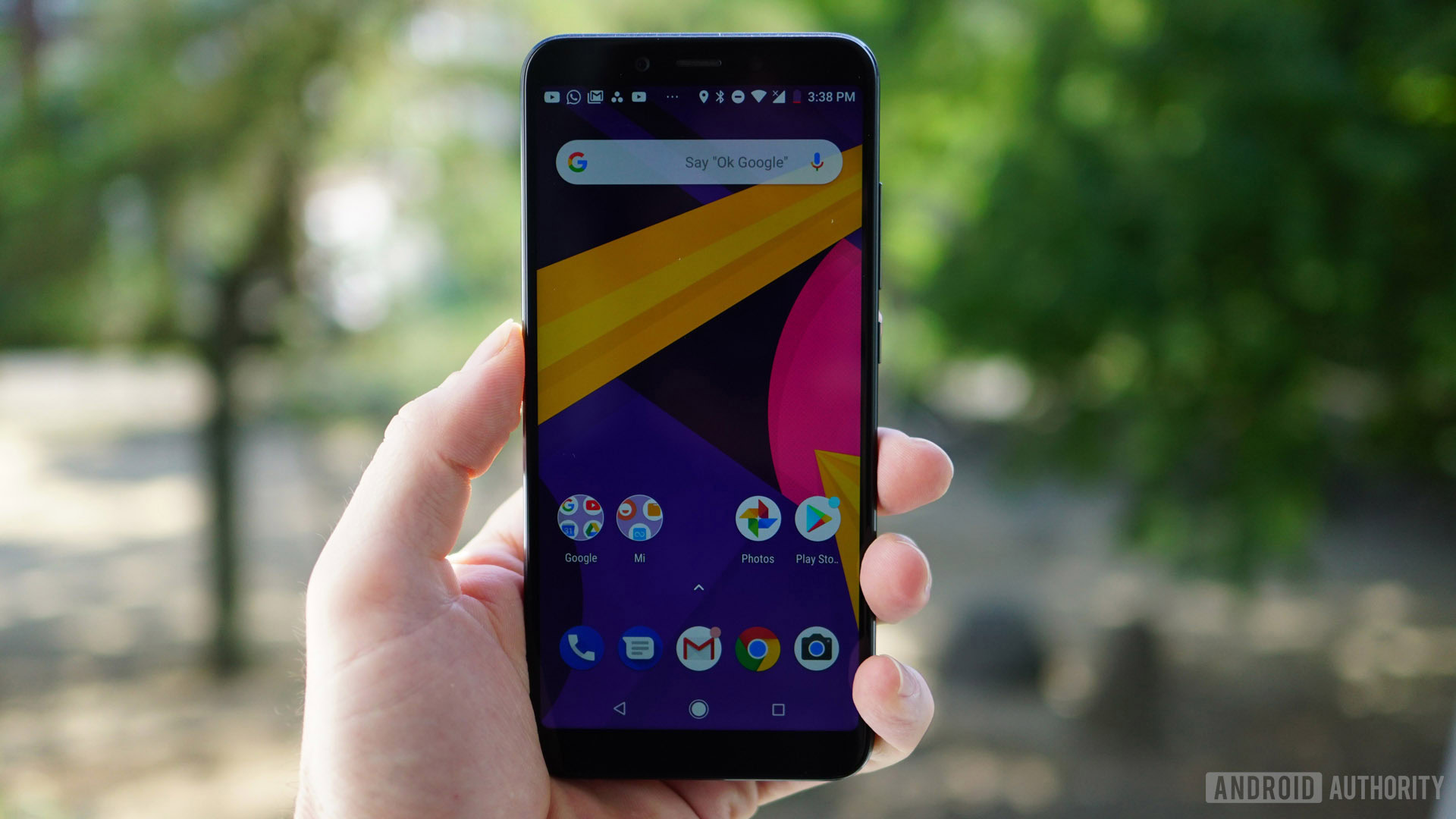
The 4GB/32GB Mi A2 costs 249 euros (~$290). I used the 4GB/64GB version for this Xiaomi Mi A2 review, which will set you back 279 euros or 16,999 rupees (~$325) — this is the only variant being made available in India right now. The top-tier variant comes with 6GB of RAM and 128GB of storage and will set you back 349 euros (~$408) with Indian pricing to be revealed later.
Taken on its own, the Mi A2 is a very impressive device, and not just because of its price. The Mi A2 delivers on most aspects of the core smartphone experience — in some it excels. However, it is hindered by a slightly dim display and mediocre battery. With omissions of things like microSD, NFC, wireless charging, an IP rating, and a headphone jack, it’s tough to recommend to everyone.
Taken on its own, the Mi A2 is a very impressive device, and not just because it is so affordable. But it has strong competition.
If the missing features I listed above are not mission critical to you, the Xiaomi Mi A2 will delight and surprise. I’ve long felt the mid-range is the best place for a solid smartphone experience, and phones like the Xiaomi Mi A2 reinforce that feeling. It’s not perfect, but it’s as close as any other 250 euro phone.
That said, the Mi A2 has some stiff competition. The Nokia 7 Plus is a great device that costs only a little more, the Redmi Note 5 Pro delivers on a few of the Mi A2’s shortcomings and there’s a whole host of competitive devices from Honor that equally deserve your attention. The silver lining to all of this is that even if you only have 250 or 300 euros to spend, you have a bevy of really great options.
Read Next: Xiaomi Mi Mix 2S Review: The luster remains